Living in Taiwan: A Complete Guide for Culture Nomads
This is our guide to living in Taiwan as language learners and culture nerds — after months of living there.
This is also a love letter to Taiwan, with its warm people (and weather), fascinating politics, diverse culture, incredible food, beautiful nature, and blazing fast internet. We lived there, talked to people, and observed.
Note that this is a guide to living in Taiwan: if you’re looking for facts like population or surface area, go to Wikipedia. (I still am not sure of the population, actually, and wonder what it would help me by knowing.)
In summary, living in Taiwan is wonderful, and you should try it.
Taiwan has extremely high quality of life, with great food, good healthcare, comfortable accommodations, extremely convenient transportation and blazing fast internet.
Life in Taiwan is cheap, with low rent (even in AirBnBs), meals costing usually US$3-5 (depending on how big), and easily available to the point where you don’t have to cook.
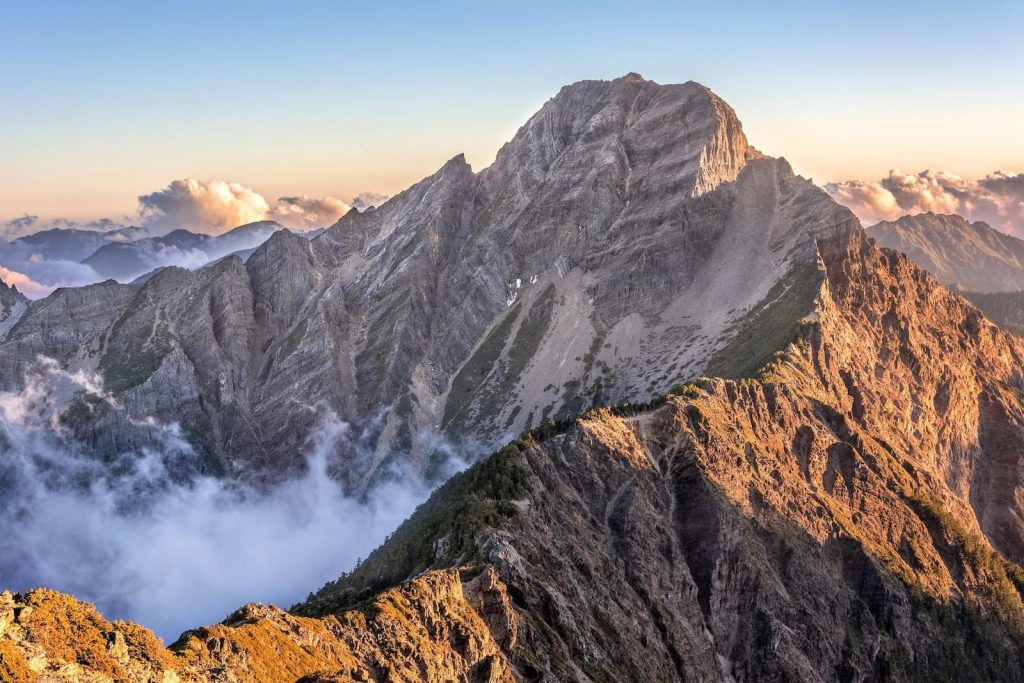
Stay in Taiwan in an AirBnB for as little as $20 a night!
We always stay in AirBnBs — over a hundred by now. The reviews and ratings give us critical info and great peace of mind. Sign up to AirBnB here for $45 off your first stay.
The only slight inconvenience in Taiwan to the non-Chinese speaker is language, but you can get around by gesturing. If that’s OK with you, then Taiwan is your place.
Contents
Background — What is Taiwan? Is it China?
Taiwan is not the same as China… unless you ask China, in which case it definitely is. According to many Taiwanese, Taiwan is also the official “China”. In many ways, Taiwan is much more China than modern mainland China.
(See our complete layman’s guide to understanding what it means to be and speak Chinese to get a fuller picture.)
When I was living in Mainland China (see below), non-Chinese friends would often describe Taiwan as being “like China, but without the bad bits”. In other words, like Mainland China but with fast and uncensored internet, clean air, reliable public transport, beautiful (accessible) nature and warm weather.
Even better described: living in Taiwan is pretty close to living in paradise. What was this mythical place, I wondered? I looked forward to finding out.
So what is “China”? Is that “Mainland China”? It’s confusing, sometimes even to the Chinese. (And for that matter, so is who and what is “Chinese”).
In the West, when people say China, typically they mean the Mainland, not needing to be more specific. Westerners would probably refer to Taiwan as being “Taiwan”. Similarly, Hong Kongers call their home Hong Kong, not “China”.
In Taiwan, people call their own country as Taiwan, even if formally it’s known as the Republic of China. The formal name for Taiwan you’ll see on government buildings and in the airport is 中華民國 (In Mandarin: zhong hua min guo), which translates to something like “China People’s Country”.
This is to distinguish Taiwan from the People’s Republic of China with its capital in Beijing, which refers to itself as 中华人民共和国 (in Mandarin: zhong hua ren min gong he guo), which adds a few characters to emphasise it’s governed by the “people”.
But never mind what Taiwan is officially called. To most people speaking to you day-to-day you’ll hear them use the word “Taiwan” in any language.
Within the walls of Mainland China, it’s all just China. Taiwan, Hong Kong, Macau and the Mainland are the one entity — despite the objections of Taiwanese and Hong Kongers for decades (much more vocal in Hong Kong since 2019). If you ask anyone in China whether Taiwan is a country, they’ll flat-out deny it (and maybe laugh at you). To Mainland Chinese people, Taiwan is part of China. However, “China” has nuance.
Each of those places, Taiwan included, has a separate currency, legal system, and system of local governance, even if it all boils up to the same head honchos in Beijing… much further up than you and I will ever reach (unless you’re really good… or really bad).
In any international airport in Mainland China there’s a terminal for “domestic”, and a terminal for “International, Hong Kong, Macau, and Taiwan”. C’mon guys, you aren’t really doing much of an attempt at integrating if you have to spell it out.
If you’re born in Taiwan, Hong Kong, or Macau, you have a different passport with different rules about how freely you can travel in China or elsewhere. You also probably speak different languages.
Finally, most countries recognise only Beijing’s sovereignty and don’t have diplomatic ties with Taipei; only with Beijing. It has been this way for decades.
In summary, if you’re going to Taiwan, you can assume it’s a different country unless you’re doing some high-level business or government work. In those situations, don’t forget who’s really in charge.
The People of Taiwan
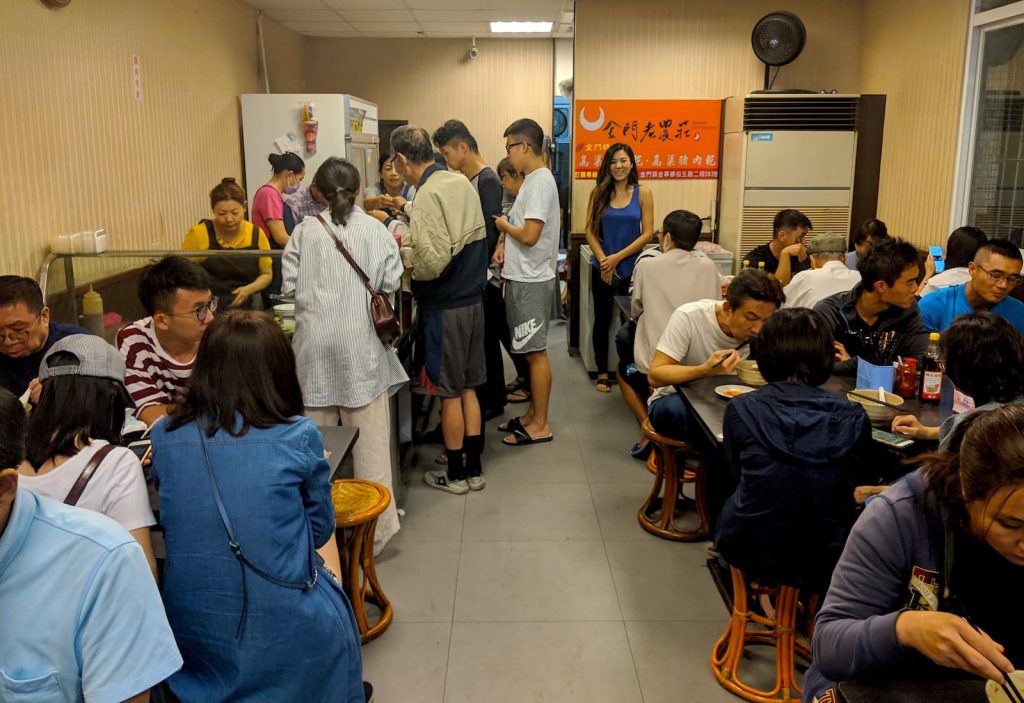
Taiwanese people are super chill. It’s not quite a tropical island, but it’s getting close. Especially compared to most of China, which is moving at a frenetic pace and constantly in competition with itself, most of Taiwan is super relaxed, and so are the people.
The level of education in Taiwan is high, and a large number of young Taiwanese (and middle-aged professionals, like dentists and lawyers) have been educated at least in part in English-speaking countries.
So in many scenarios, you can expect Taiwanese people will speak English, something I definitely wouldn’t say even in Beijing.
For example when visiting a doctor or dentist in Taiwan, it’s likely the person treating you speaks English, particularly if they’re savvy enough to have their location listed on Google Maps. It’ll be professional English, not exactly banter, but I doubt you ever learned how to say “I think I need a root canal, because I got a filling a few weeks ago and there’s dull, throbbing pain” (sigh, the joys of travel) from Teach Yourself Chinese in 21 Days anyway.
Similar to a lot of South-East Asia, and perhaps places with warm climates in general, Taiwanese people are patient, kind and helpful. This is generally true of Mainland China, but in the north people can be brusque and direct and not have much time for you; in Taiwan there’s a lot of time.
People in Taiwan talk to us until we understand each other, no matter how long that takes. When we don’t have a common language, we gesture to explain things. I think this is why Taiwan is rated so highly as a digital nomad destination, even though most digital nomads have no idea of the language.
Taiwan is, compared to most of Greater China, bathed in serenity. It is definitely not loud, like Hong Kong; nor even like Mainland China. Hong Kong is packed to the gills with people of all social and geographic origins, sometimes yelling at each other to be heard, or just in casual conversation.
Mainland China has a number of annoying (to foreigners) societal norms like blasting music while on peaceful hikes, not queueing up for things like buses or restaurants and not using headphones when watching music or playing games, things we didn’t see much of while living in Taiwan. It’s not silent like Estonia was, but it did have the quiet island vibe we were looking for in a place we could call home for a while.
Food of Taiwan
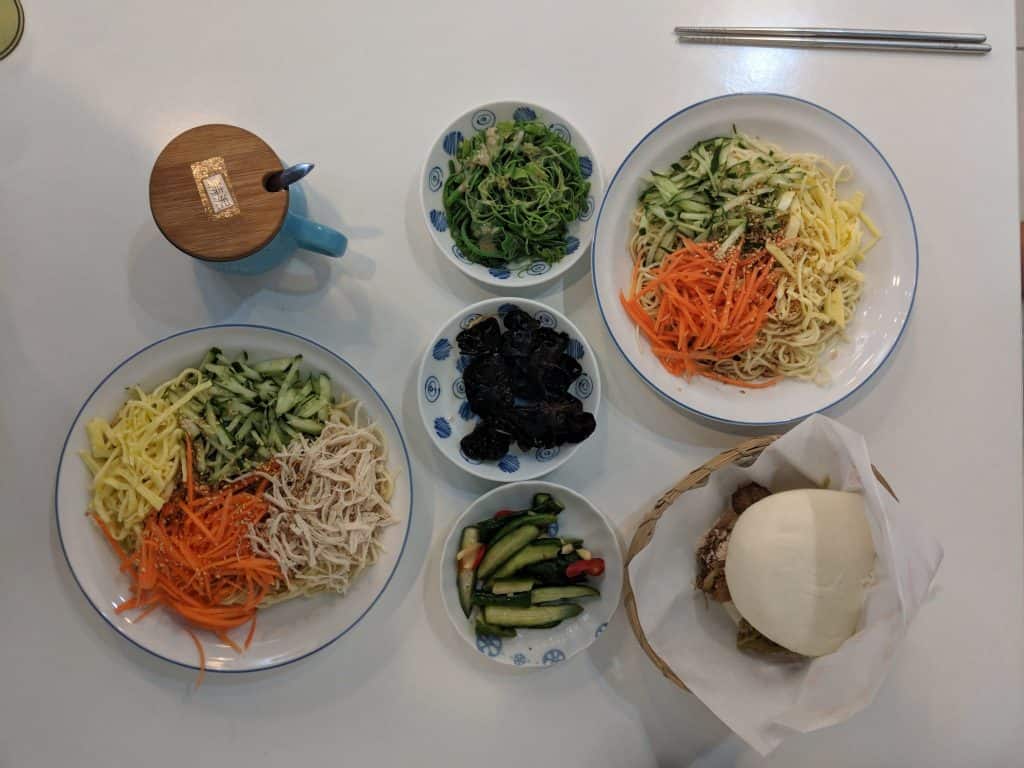
Taiwan is a place with a lot of amazing foods. So much so that we dedicated two entirely separate posts to it: our guide to finding amazing places to eat in China, and our guide to eating healthy in Taiwan.
Taiwan is of the places in the world most often cited by travellers as having amazing food, alongside Japan, Korea, Italy and Singapore (crushing it, Asia!). This is pretty anecdotal, but something I’ve noticed.
You just have to look at a list like this of 57 foods to be convinced that Taiwanese food is great. (Yikes! Also: we ate all of those 57 things. Well done, us.)
Of particular note are the following things that you are a chump if you don’t eat:
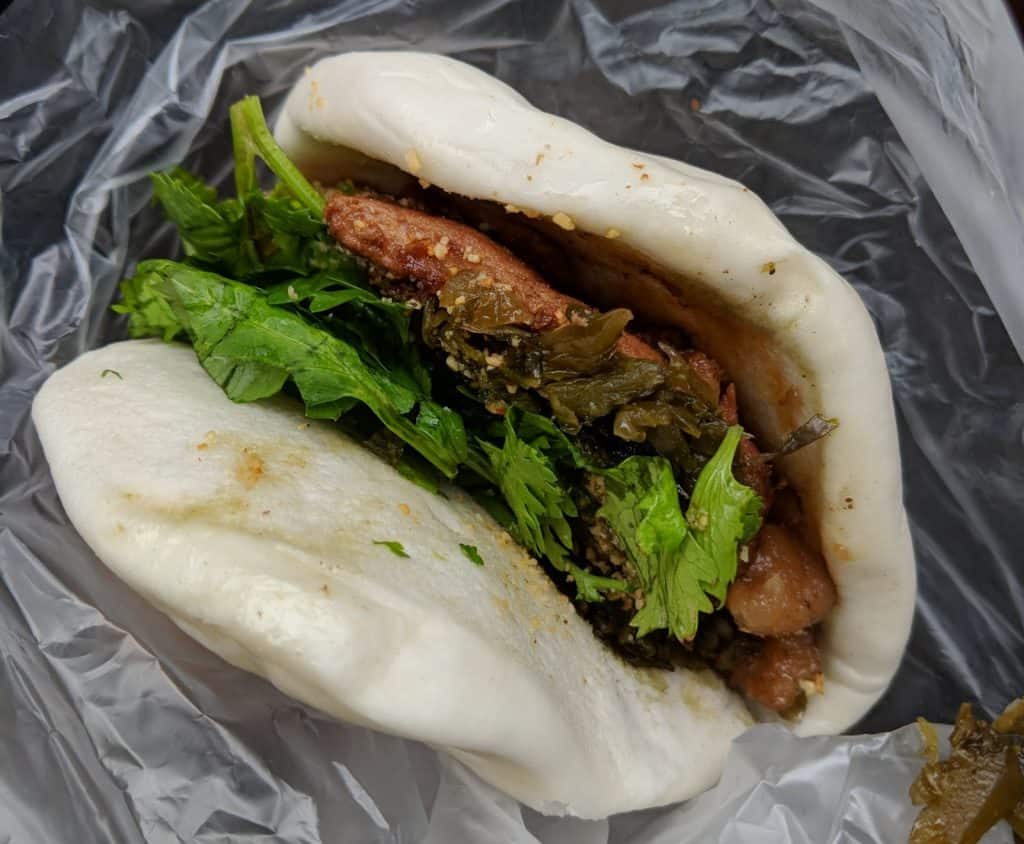
- Fried chicken cutlets (雞排, ji pai). Like fried chicken of any variety, these are tender breast or thigh fillets that refried in batter and that make time temporarily stop.
- Buns, particularly local “Taiwanese hamburgers”, gua bao (刮包), which are tender braised pork belly and a few flavourings between pillowy soft buns. A common staple anywhere in China, but unique and delicious in Taiwan.
- Beef noodles: A very simple dish of beef, broth and noodles, all of which have to be perfect and in harmony for the ultimate beef noodles dish. You should get these several times, at several places, and learn what makes for quality beef noodles.
- Braised pork rice: Like the cheeseburger of Taiwan. Fatty pork with sauce drizzled over rice.
- Shaved ice desserts: Classically mango pieces and sauce drizzled over shaved ice, these can include many other additions like other fruits, red beans, other sauces and ice cream.
- Fruit (tropical): Being a tropical island, Taiwan is home to many fruits you can’t find as easily too far north or south: mangoes, lychees, guava, papayas, dragonfruit (pitaya) and others. Interesting things happen to your insides when you have too much dragonfruit, be warned.
There are many more things, too.
Like most of Asia, Taiwan’s food is carb-forward. You’ll see noodles, rice or dumplings featuring in most entry-level meals, either as an accompaniment or something served at the end. This is fine if you have an Asian metabolism that flies along at 100km/h at all times, but if you don’t, you might want to find a way to take it easy.
I also wouldn’t describe most of Taiwan’s commonly-available food as “healthy”. Much of it is fried, with most of the rest deep-fried, and only a small amount boiled. This is a double curse because they’re so adept at frying, and keeping things fresh and high quality for you, for example by re-frying something before your eyes to make it hot and crispy.
Finding great places to eat
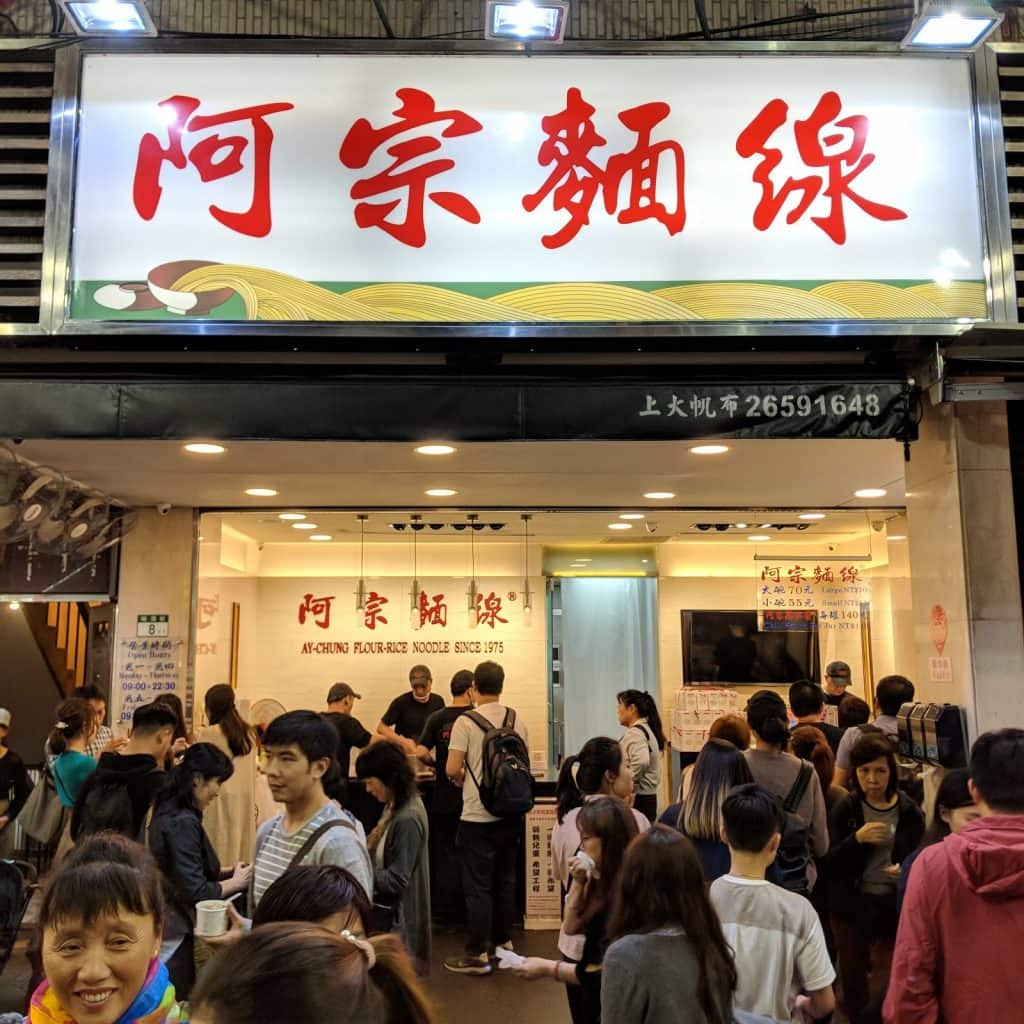
For the casual traveller, it’s not terribly easy to find great places to eat in Taiwan.
I’d start first with our own guide and your intuition. Go to a busy part of town, for example near Ximending (西門町) in Taipei, that’s littered with shops. Walk around, preferably 30-60 minutes before you want to eat, and note where the lines are and there’s a mass forming. Those are your primary ports of call. The Chinese call this being “hot and noisy” (熱鬧, re nao) and it’s an intuition you’ll need to refine.
Secondary indicators of great places to eat in Taiwan include:
- A clear specialisation, e.g. in just one kind of noodle, served as either ‘spicy’ or ‘regular’
- A solid production line where a few people are cranking out the goods
- Barriers to oblige people to line up
Read our guide to eating out in Greater China for more — lots of gold in there.
Secondarily, you can use Google Maps. Sounds obvious, but it’s just different to China where Google Maps doesn’t work. Generally, the most popular spots in Taiwan have thousands of reviews. The challenge is when you go to a dynamic food district like a night market. The Google reviews will be of the night market in general, not of the food stalls. So you’ll have to rely on your instincts!
Finally, you might want to consult local blogs for “must-eat” foods, for whatever city you’re in.
Languages of Taiwan
Obviously, people in Taiwan speak Chinese, because they are Chinese. Right? Right.
Except it’s slightly different. Firstly, the Mandarin is a little different (though totally mutually intelligible. Secondly, they use traditional characters in Taiwan, vs simplified. And finally, there are other languages spoken in Taiwan — most notably “Taiwanese”.
The Mandarin of Taiwan
People in Taiwan speak Mandarin, principally. It’s the official national language, and the most spoken language (something like 80-90% of the population speak it fluently). But there are important things about Taiwanese Mandarin worth noting.
Firstly, the Taiwanese Mandarin accent is different. It’s something like central Chinese, except… more lilting (ok, effeminate). A good friend of mine, Louis, learned Chinese in Taiwan and is now constantly made fun of for his effeminate way of speaking despite being shockingly colloquially fluent. He’s pretty badass, known to scale and slide down mountains with aplomb and enter octagons (sometimes exiting successfully) and wears it well.
In Taiwan, people tend to pronounce “shi” as more of a “si” sound. This makes understanding numbers like 44 quite difficult (it sounds like “si si si”, but tones and context help).
There are definitely regional and class variations, so the above is a general rule.
Secondly, Taiwanese use traditional characters. Which I think are cheating (I kid). I learned Chinese using simplified characters. Traditional ones affect about 300 of the most common characters used, and really just add more information.
So if you, like me, learned simplified Chinese, it’s usually not much of a hindrance. To the untrained eye, the most complicated characters just look like a thumb-print ink smudge. A few I’ve found myself looking up when I saw them in daily life: 馕 (nang2), a kind of flatbread you see in Xinjiang restaurants, 醫 (yi), seen on hospitals, and 廳 (ting), meaning ‘hall’.
The most interesting thing about the simplification process is that it was such a half-assed job. You want to simplify? How about simplifying all of them! No, the lazy person in charge of this project just simplified a few and went home, and making some of them a bit simpler.
Here are some examples of traditional vs simplified Chinese, mostly food-related (c’est la vie du expat):
| Word | Traditional | Simplified | Differences in Traditional form |
| Taiwan | 臺灣 | 台湾 | First character obviously has a lot more going on, so does second. Perhaps making a point |
| Noodles | 拉麵 | 拉面 | Second character has a whole thing around the other bit |
| Dragonfruit | 火龍果 | 火龙果 | Middle one, “Dragon”, is busier |
| Chicken thigh | 雞腿 | 鸡腿 | First is more complex in traditional; second is identical |
| Tea egg | 茶蛋 | 茶蛋 | Samesies in both |
| Restaurant | 餐廳 | 餐厅 | Second one goes from nightmare to bearable |
Anyway. It’s all characters and it’s all hard. Don’t let simplified or traditional fool you into thinking one is easier or one is more authentic or something, for us foreigners it’s all just an impossible wall of strokes to never master over a lifetime of trying to learn. If you decide to learn them… see you in six months (or longer).
Will Chinese characters (hanzi) ever be replaced with romanisation?
This is a common question. I know where it comes from. So many languages have been simplified, including Japanese (into Katakana and Hiragana), and Vietnamese (into a highly complex romanised form).
When anyone first starts learning Mandarin they first learn pinyin, a romanization system that’s used to explain the standard pronunciation of all Chinese words.
It’s easy to read pinyin. For example, that sentence in characters and then pinyin becomes:
- Chinese characters: 閱讀拼音很容易
- Mandarin Pinyin: yue4 du2 pin1yin1 hen3 rong2yi4
Obviously it’s easier to read the second one! But understanding the meaning becomes a lot harder. Sometimes we have to sound it out to figure out what it means.
This is because while each character has just one meaning (maybe a couple), one sound can have many associated characters and meanings. Take the sound shi4, which is a “shi” sound with a downward tone.
The word shi4 can mean the following fifteen things: 1. market, city; 2. 是: to be; 3. 室: room, work unit; 4. 式: type, form; 5. 视: to look at, regard; 6. 事: thing, matter; 7. 试: to test, experiment; 8. 世: life, age, world; 9. 士: minister, noble person; 10. 氏: clan, common name; 11. 饰: decoration, ornament; 12. 适: to fit or be suitable; 13. 釋: to explain; 14. 势: power, momentum; 15. 柿: permission, my favorite fruit.
Context helps understand a lot. But fifteen is a lot of possible meanings to distinguish via context. (There are actually a couple more, but fifteen is enough for now!)
I do think it’s inevitable that characters will go towards a simpler writing system, but it’s a long way further off than people think—possibly not in my lifetime—because of the degree of entrenchment of Chinese language into identity and culture.
Other languages of Taiwan
The other main language spoken in Taiwan is “Taiwanese” (臺語, tai yu in Mandarin, tai gu in Taiwanese). This is a form of Chinese, but it’s also related to Hokkien in Mainland China and south-east Asia. This is nearly as widely spoken as Mandarin.
However, Taiwanese is not easy to learn.
Firstly, there are far fewer resources available than there are for most languages (including Mandarin). You’ll basically only learn it colloquially from people you know (who are quite willing to teach it, mind you).
Secondly, the written form of Taiwanese is not entirely standardised. A lot can be expressed using Hanzi characters, but a lot has to also be expressed in romanised text.
Finally, there are different accents of Taiwanese around the island. People in the north speak it differently to the south, apparently (I couldn’t really tell).
In short, if you master Mandarin you’re doing extremely well. Taiwanese will get you some flavour points if you just know maybe 200 words/phrases.
Taiwanese Society
Health and Healthcare in Taiwan
Taiwan has a national healthcare system (NHI, National Healthcare System… yes, similarly named to the one in the UK) that means that most healthcare is free or very cheap for citizens or residents (i.e. anyone on a work or student visa).
For you, the traveller, it’s just “very cheap”. We only explored the fringes of it, but we found that, for example, major dental operations only cost the “gap” or “co-pay” that we’d pay in Australia or the US with full insurance cover. In-patient services would be something like $100 a night at a good hospital. It’s so cheap that we’d rarely even bother using our travel insurance
Religion in Taiwan
Taiwan has more evidence of religious influence than most of Mainland China. Many streets we’d walk down would have small temples and shrines, a sudden room full of gold and crimson amidst the shopfronts selling pork rice or seafood congee.
Regularly, ordinary people living in Taiwan would place out offerings and burn incense paper in the streets (something we didn’t grab a photo of… seemed opportunistic). At major temples we visited, it was common for people to bow, make a wish, light a candle and place it at the mantle and so forth.
Race and Racism in Taiwan
In Taipei, there were some visitors, but it was notable that there were far fewer foreigners visible than there would be in, for example, Shanghai.
Venturing south to Kaohsiung, we barely saw ANY obvious foreigners. At the touristy spots (e.g. near Hualien, a gateway to Taroko National Park) there were more, especially tour groups, from other parts of Asia (Korea, Japan, Hong Kong and the Mainland, most notably).
In talking to people, we noticed a lot of tension with Mainlanders. People were keen to make quick observations about Mainland Chinese are like this or like that, entirely unprompted.
The tension with mainlanders is similar to what we observed in Hong Kong. It’s a product of the rapid increase in tourism from Mainland China, resulting in crowds of people exhibiting similar behaviour that jars with the local Taiwanese population.
Sometimes, few bad examples of bad behaviour get blown out of proportion and xenophobia starts to grow. It’s exacerbated by the fact that the Chinese government asserts its authority over Taiwan, so the political and personal prejudice are conflated into one.
Just a word of warning for people visiting Taiwan: take with a grain of salt anything that the locals say about Mainland Chinese. It’s easy to be swayed, and I’d encourage you to spend time in Mainland China and form your own opinions.
Social Welfare in Taiwan
We didn’t see many obvious signs of poverty in the various cities we visited in Taiwan. It does exist, but it’s not something that is openly visible like in much of India and elsewhere in South-East Asia. This is partly due to Taiwan’s welfare and healthcare system, and partly due to traditional Asian culture of children being responsible for the elderly.
We also did not see inebriation in the street or obvious signs of drug use.
The most common form of substance abuse is chewing betel nut seeds (檳榔,.bing lang). I knew this was common elsewhere in the pacific, but did not know it was something common in Taiwan.
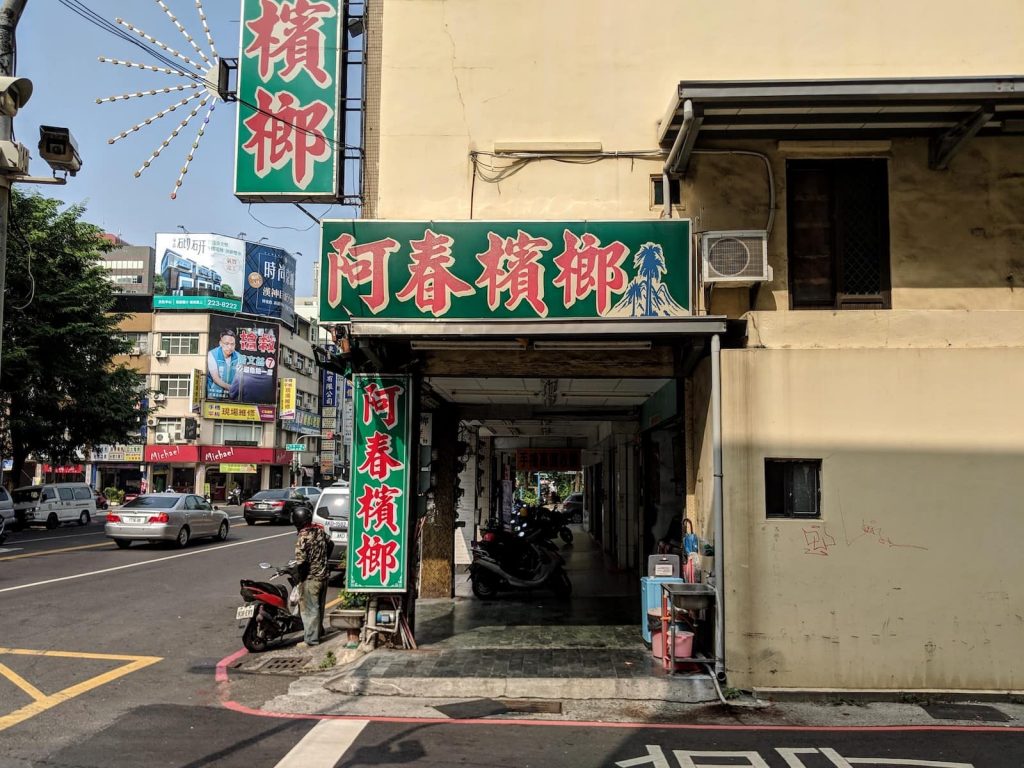
Jo and I first noticed the stands selling betel nut seeds as they were wrapping the seeds at night time. What the heck were these? We couldn’t figure it out visually. I had to look up the characters and then ask someone about it.
A little more research found some interesting facts
- It’s a betel nut seed, which is a seed of the betel palm
- It’s wrapped in mint (yum) and flavoured with lime (delicious) and… tobacco (gross)
- As a package, one betel nut seed is as intense as (supposedly) six cups of coffee
- It’s a leading form of oral cancer.
There are some depressing articles online that show it’s common among the working class, that the government hasn’t prohibited its use despite the extremely strong links to oral cancer, and that most people don’t know it causes cancer when chewing it, and that the cancer can manifest itself decades after use.
Safety in Taiwan
Like Hong Kong and China, Taiwan is extremely safe. You can walk home at 2am in Taipei and feel comfortable you’re not going to get mugged. Of course there are exceptions, but this is just to say it’s one of the safest places we’ve ever been to in the world.
Road safety is helped by the fact that it’s hard to go more than 30-40km/h in the cities. Scooters/mopeds are rife, helmets are worn only by 90% of the population and those that are worn are flimsy, terrible looking and in some cases not even strapped on. Needless to say, people don’t wear any other form of protection on a scooter.
If you rent a scooter, don’t go above 30-40km/h to keep you and your passenger reasonably safe. At those speeds, it’d be like falling off a bicycle. You’d get terrible gravel rash and probably break a collarbone but with a good helmet it probably won’t be the end of you.
Dress in Taiwan
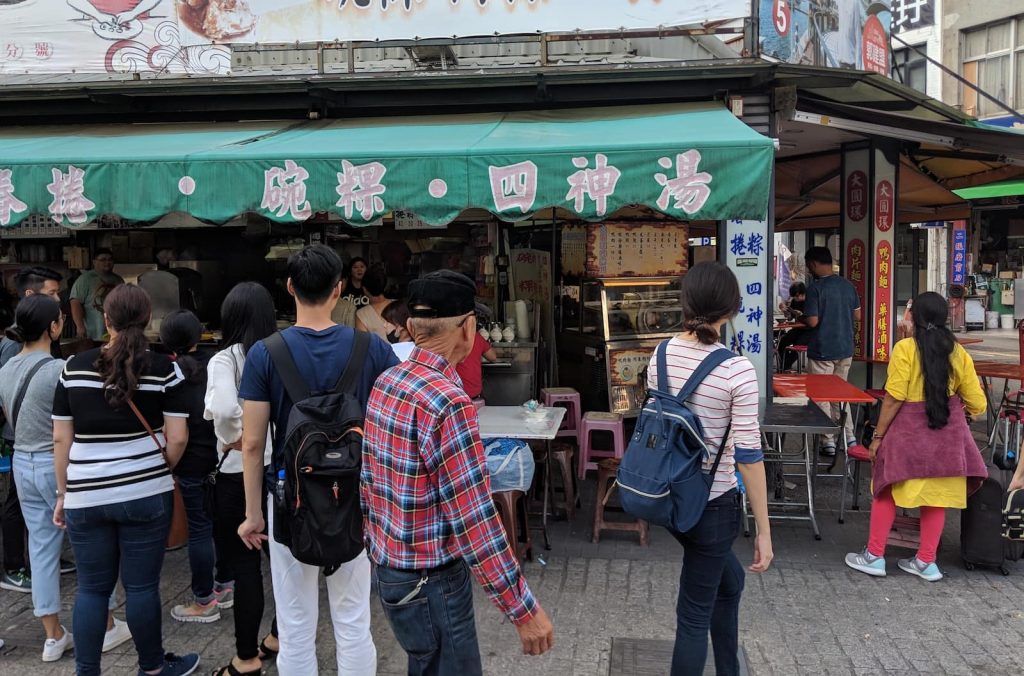
Taiwan is very casually dressed. Probably the most casually dressed part of China I’ve seen, equal to the outskirts of Beijing, or maybe a second or third-tier city.
Typical dress was
- Shoes (flip flops are not ubiquitous)
- No-name t-shirt
- Trousers or longish skirt. Shorts are also more rare (also annoying)
We’d rarely see things like boots, pumps/heels or long dresses. When we did, we’d think there must have been be a special occasion.
Activities in Taiwan
What people do in Taiwan
Taiwan has a lot of social spaces but they don’t centre around alcohol. There are very few bars and clubs. From what we were told, young people don’t generally drink a lot of alcohol in Taiwan, and prefer to go to places like night markets, malls and arcades with their friends.
Even at the night markets, we saw no alcohol. I thought I saw some taps at one stand, but it was for tea!

Night markets are a favourite place for people living in Taiwan to meet. They are huge and open, with a large range of things to do, including
- Eating, obviously. At first it was shocking to me that people would do anything else at a night market with this abundance of delicious foods, but then I realized they can be a facilitator to help people do the other things
- Shopping. Clothes, shoes, jewellery, knick-knacks. This goes beyond opportunistic tourist sales. People do their regular shopping for shoes and clothes at night markets. There’s a saying among expats on forums that you know you’ve become a local when more than 70% of your wardrobe comes from night markets.
- Games/arcades. Like a fair, at a night market you can do things like play gun games, pinball and… all kinds of games where you win prizes. Looks fun, but not really my thing.
Oh, there has been a huge proliferation of “claw” arcades. We watched a few videos on Youtube to see how it was done, and then proceeded to spend NT$50 on two items of landfill. Still, I’m proud of our results.
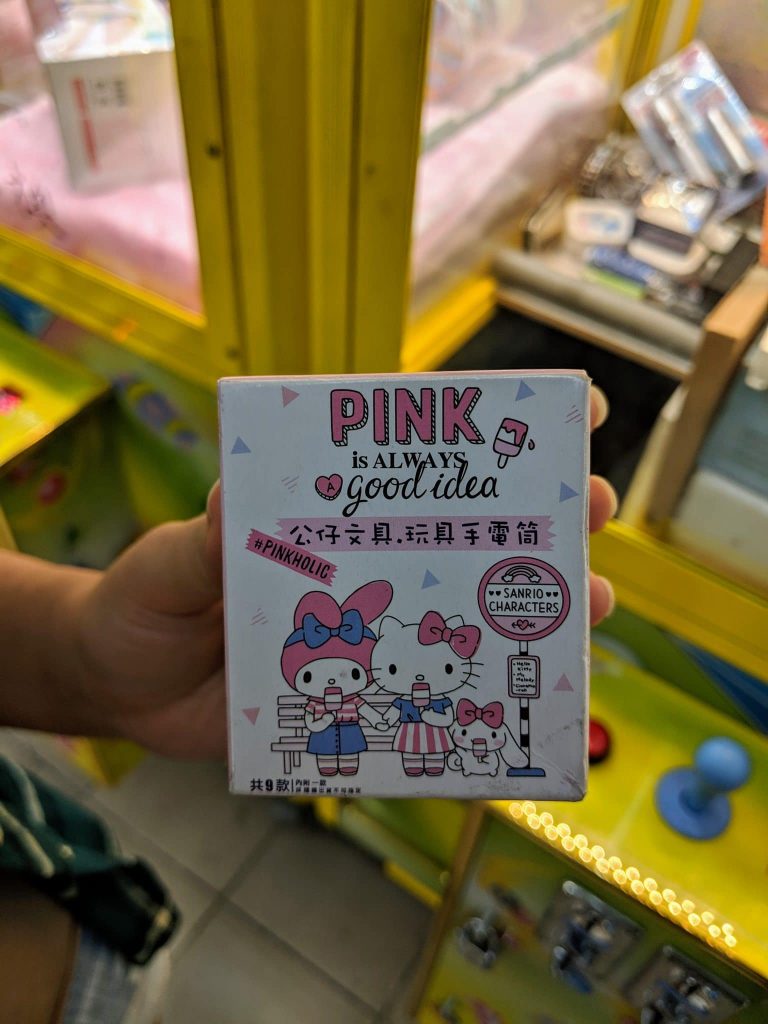
There are other things you can do while living in Taiwan that we didn’t explore—like casinos, fancy restaurants, clubs—but they weren’t as abundant as they are in other major metropolitan cities around the world.
Weather in Taiwan
Taiwan is tropical. It’s generally always warm, but it can definitely rain.
In the north (Taipei), it’s warm but can get cool around the end of the year. By ‘cool’ we mean you’d wear one layer over your shirt or t-shirt, as the temperature will be 10-20 degrees C, or 50-70F. So if you’re from the Baltics, you’re laughing at this definition of “cool”. Beach time!
In the south, near Tainan or Kaohsiung, it’s decidedly more tropical. It’s notably warmer. You might want that layer as backup, but it’s rare you’d have to pull it out unless it’s the evening or a strangely cold day.
Rain, on the other hand is far more common. The most usual way of dealing with rain is with an umbrella, but if you’re caught out, you can get to any of the million convenience stores to buy a disposable poncho. They’re inelegant but highly functional. Get ready to sweat underneath though!
There are mosquitos in Taiwan, but they’re mostly controlled in the cities, so it’s nothing like a south-eastern tropical country in that regard. We didn’t use any mosquito repellant in our entire stay and never got more than one or two bites.
Getting around in Taiwan
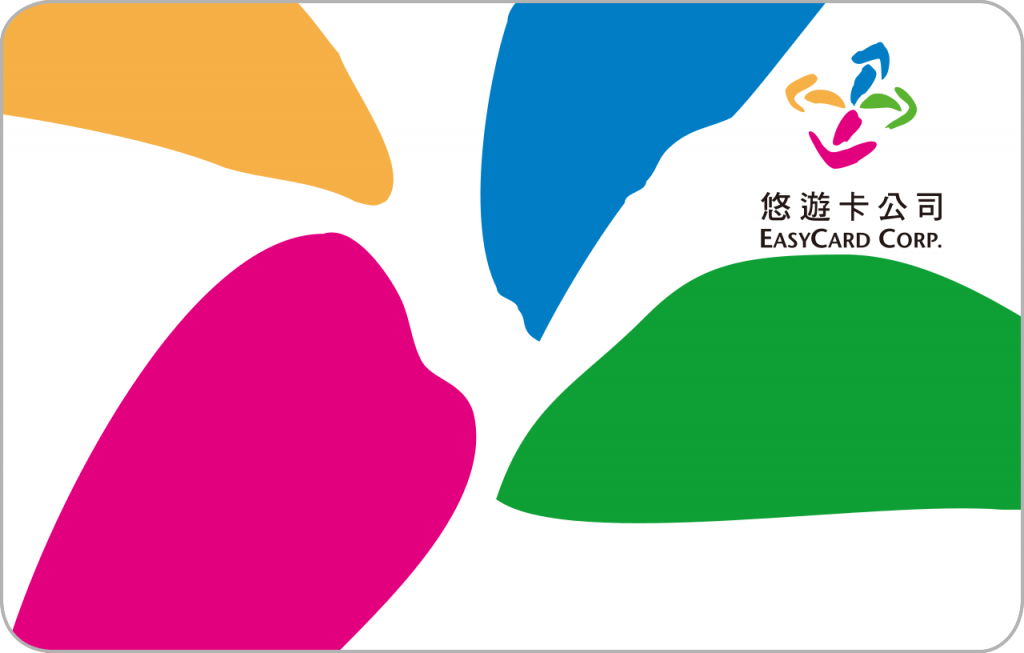
This is one of the most wonderful things about Taiwan. It makes the US and other western countries look like they really doesn’t have it together.
Get a metro card (“EasyCard”): While these are regional, they’re highly interchangeable. If you pick up an Easycard in Taipei (悠遊卡), you can use it anywhere in the country, on buses or subways. The subway networks are amazing and fully integrated into Google Maps. Living in Taiwan is easy with an EasyCard!
The bus networks in Taiwan are also amazing. It’s incredible just how many places you can go to in Taiwan with a bus! You can get these at any convenience store. You can also recharge them at convenience stores or at subway stations. Probably my favourite thing: you can use them as a quick payment form in many places. Just remember to get back your deposit when you leave (we forgot… $5 down the drain. Sigh).
Use local taxis: You can also use Uber, but I thought taxi drivers were a hoot. They’re patient if you can’t quite explain where you need to go. Just be prepared to have a Chinese address written down if you don’t speak Chinese. They’ll know the way. The best advantage they have over Uber is that they’re always just one minute away, whereas Uber’s ETAs are often 5-10 minutes. Plus, taxis are cheaper, and much more likely to have a lot of luggage space.
Walk: We walked a lot while in Taiwan, averaging over 15,000 steps a day.
Rent a scooter: Finally, you can rent a scooter if you have some experience with motorcycles (just a recommendation, though you don’t need it to ride a scooter). There are local rental agencies around the cities. It costs $10-20 a day depening on the term.
Nature in Taiwan

Taiwan is covered in forests. There are nine major national parks. Our guide to Taroko National Park covers the largest one.
A common pastime is to go out trekking, colloquially known as walking up a mountain (爬山, pa shan). Bear in mind that Taiwanese trekking is on the one hand very easy—with carefully-maintained cobblestone paths and staircases—and on the other hand, involves going up steep staircases that can last hundreds (sometimes thousands) of steps.
Because this is a popular weekend activity, you can expect hikers of all ages and experience levels to be making themselves up these mountains.
Some hikers in Taiwan will be flying up wearing nothing but sneakers and some outdoor gear, while there’ll be adventure-seeking octogenarians and dress-wearing Instagram celebrities patiently ascending step by step (the latter complaining a lot more).
Life logistics
Getting Visas for Taiwan
Since 2020, you can’t travel to Taiwan for tourism. You can apply to travel there for other reasons, but you have to do so via the Bureau of Consular Affairs.
Most westerners can get 90-day visas on arrival. According to policy, you have to have an exit trip booked to be granted the visa. I was asked if I did when leaving the port I was at (Amsterdam), but NOT at arrival.
Also, I never had to show anyone my exit trip to get a visa. Nonetheless, other people visiting Taiwan have assured us that you definitely do need an exit ticket to be granted an entrance visa, and they are strict about it.
In case you want to play it safe, get an Eva Air ticket to Manila, which should set you back about $100, with a $30 cancellation policy – the cheapest cancellation policy I’ve found. We used this, and we were refunded as expected.
We both purchased the ticket and refunded it direct through the Eva Air website, which is what I think you should do to keep it simple. (If you know where you’re going next, of course, just buy that ticket.)
Staying longer than 90 days in Taiwan is more complicated, and will require you to be sponsored by a company or school. If you do, make sure you stay less than 183 days in the year, lest you be liable for income tax in Taiwan.
Cost of living in Taiwan
Living in Taiwan is CHEAP. This was the reason we went, after all!
If you’re staying very short term, you can easily pay under $50 a night for a decent private room in a hostel or a small hotel.
Staying for a couple of weeks? You can get studio apartment AirBnBs with daily service (fairly basic, like changing towels and taking out the trash) for US$25 a night. It will have air conditioning, fast internet, clean tap water and some basic amenities — one of ours even had a washing machine.
If you’re staying fora month or more, you can get an apartment through one of the local Facebook groups (look up Kaohsiung apartments and flat-sharing). Most of these are for bedrooms in other people’s apartments.
But real estate agents will also scour those Facebook groups, looking for people to rent apartments to. In these cases, you can get a bedroom with its own bathroom in a shared apartment (with one other person or couple) for NT$10-15,000, or $2-300 a month. Outrageously cheap, and very sustainable long-term.
Food is also inexpensive. You typically will pay about $10-15 a head per day, and that’s with generous meals and snacks any time you want. You can do as low as $7 a day if you keep to very basic local fare, but I wouldn’t advise a diet of entirely beef noodles. Enjoy the fruits, drinks and so on.
The major exception to low costs is coffee. If you are a digital nomad and like to go out for coffee, it’s hard to not spend less than US$2.50 for the most basic drink, an Americano. Get a latte or a pour-over and it can be higher.
Of course, that expensive coffee gets you a comfortable seat for a day in a hugely-spaced cafe with air conditioning, so it’s actually a steal compared to the $25 a day you’d pay for a coworking space anywhere in the world (that doesn’t necessarily come with coffee!)
On the upside, the coffee in Taiwan is fantastic, not just by Asian standards but by international. Even the local coffee chain (we loved Louisa) make excellent coffee of all forms. And they all have wifi and seating. Soak it up.
Technology in Taiwan
A few details on the tech side of things, important for anyone visiting, particularly as a digital nomad!
Electricity and wall sockets/power points: Taiwan operates on 100/110V, using a US-style connection but usually without the earth pin. So it’s two-pronged flat pin, not three-pronged.
This means you should check everything you’re travelling with and make sure it’s compatible with 100/110V. For us, oddly enough, only our toothbrush chargers are not compatible internationally. Everything else works everywhere.
Data for phones: Using our Google Fi accounts, we got fast LTE-speed data nearly everywhere. Nonetheless, you can get a local SIM card from Chunghwa Telecom for NT$1000 (about US$30) for unlimited LTE data that’s always fast and never capped or throttled. WiFi in cafes is abundant.
Definitely read our guide on saving mobile data while travelling — it’ll keep you going for twice as long!
Get iTaiwan WiFi in the Airport: This is government-sponsored fast WiFi that’s available everywhere but for which you need to be in the airport to sign up (unless you have a local sim… in which case you’d need this less anyway).
Once you sign up for iTaiwan at the airport, which you can ONLY do in the airport on their wifi, you can use Wifi at thousands of hotspots around the country – including in convenience stores. This means that every 7-11 and Family Mart with tables becomes your cafe for the day with blazing fast internet and very cheap food and snacks.
Drones: Drones are not heavily regulated. You can fly them basically anywhere the doesn’t have residential buildings. National parks and temples are fair game!
Wrap-up
There’s a lot more to living in Taiwan that we’d be happy to cover. Is there anything more you’d like to know? Let us know and we’ll add it in.
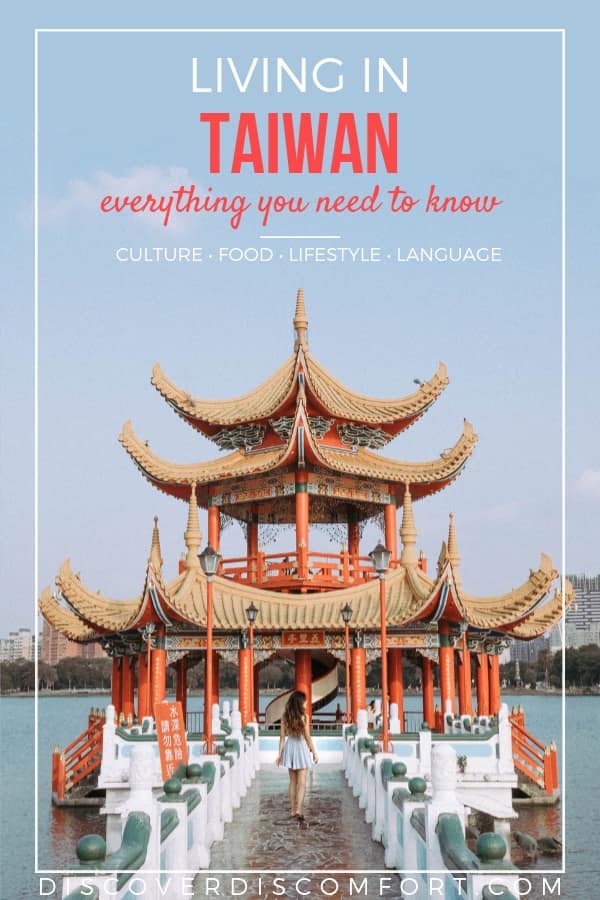

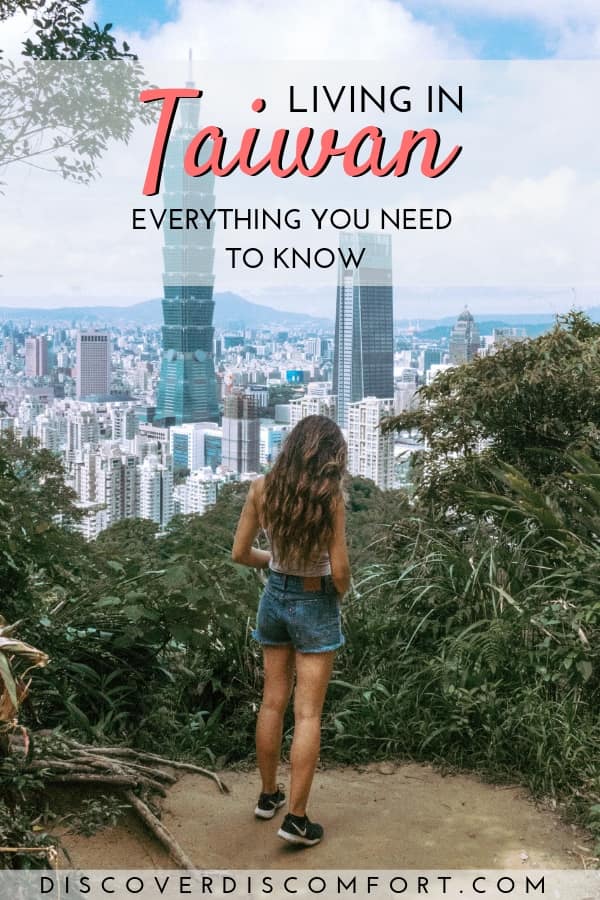


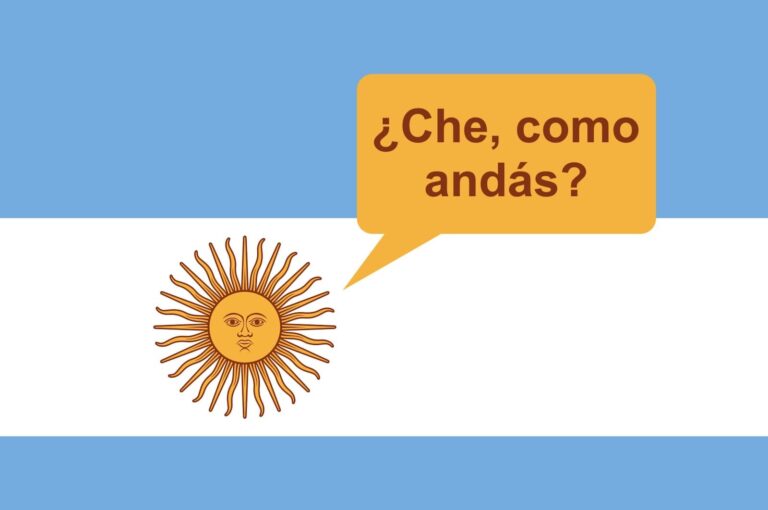

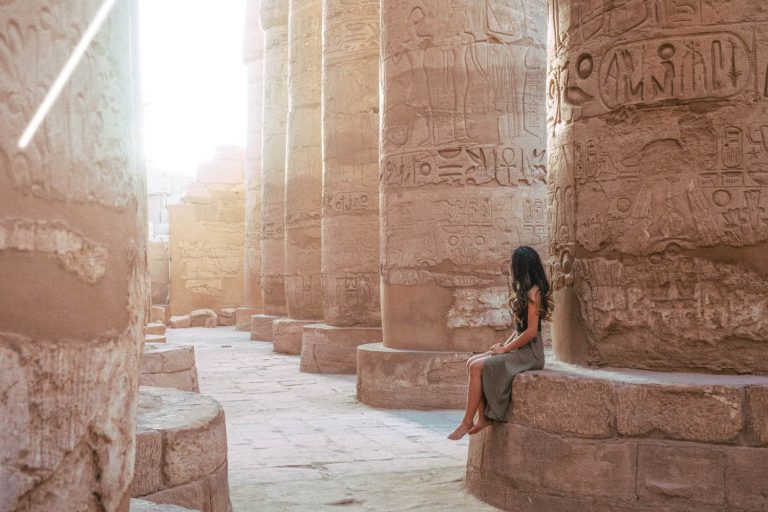
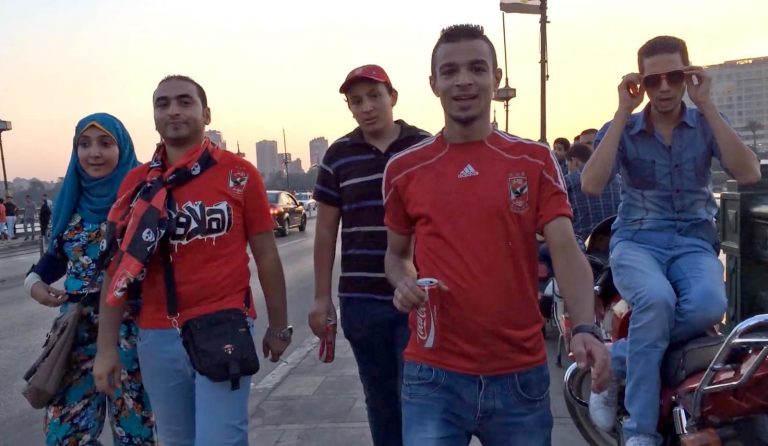

Your 馕 is still in simplified! It should be 饢. Maybe 让 vs 讓 would be a better illustration of a drastic difference between simplified and traditional characters, since as complicated as “囊” may be, it never got simplified in PRC, even in words like 齉鼻.
Oh yes, that’s simplified! You’re right. 让/讓 is a better example illustrating how much characters could get simplified, definitely.
I once made a very long table of all the commonly-occurring characters that were simplified a lot, scoring them by “not simplified at all”, “somewhat simplified”, and “radically simplified” (see what I did there with “radical”)… but it’s a fairly esoteric list.
Interesting! I would love to travel more, but when I went to Alabama to see my new grandbaby, my dogs missed me very much and stopped eating.
So, when I visited South Carolina I took all the pets with me!!
I have also been to New Jersey.
I really enjoyed reading this! I recently got a scholarship to go study in Taiwan and I have been really nervous about it. Reading this really calmed me down. Thanks alot!